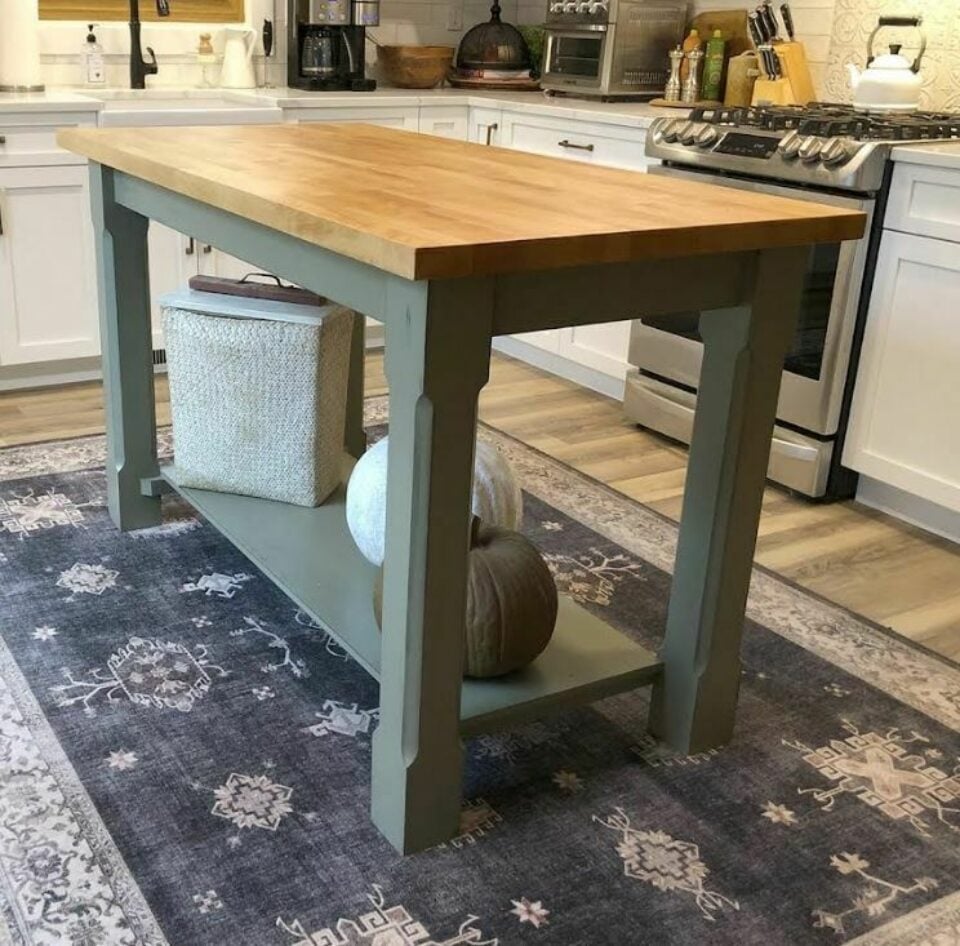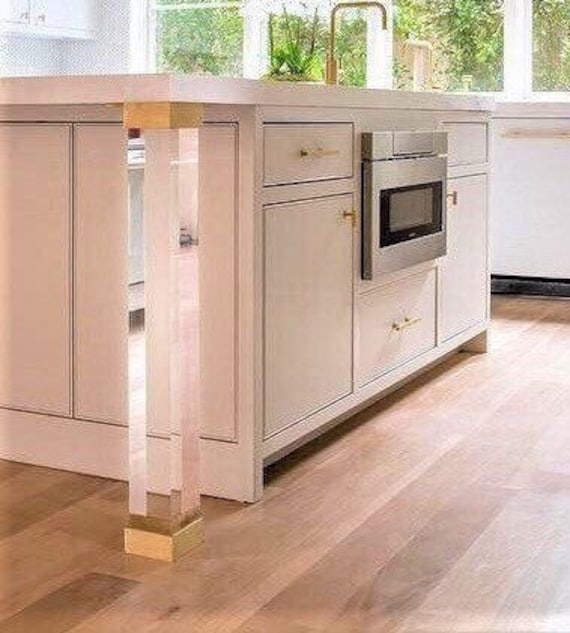Top Considerations When Choosing a Cooking Area Island Leg for Modern Cooking Area Interiors
In the realm of modern-day cooking area insides, the selection of a kitchen island leg is pivotal, affecting both aesthetics and functionality. As these elements link, they elevate better concerns about just how to accomplish the excellent equilibrium in between style and practicality, leaving one to ponder the effects of each decision on the overall cooking area experience.
Product Options
When it concerns selecting a kitchen island leg, material selections play a critical duty in both appearances and functionality. kitchen island leg. One of the most usual products consist of wood, steel, and composite options, each offering prospective drawbacks and unique benefits
Timber is favored for its warmth and timeless charm, providing an ageless look that matches numerous kitchen area designs. It is highly versatile, permitting personalization in regards to shades and coatings. However, wood may call for more maintenance to protect against bending or damage from dampness.
Metal, on the other hand, brings a industrial and modern-day panache to kitchen islands. Stainless-steel and functioned iron are prominent options, known for their toughness and resistance to wear. They can stand up to the rigors of daily usage but may do not have the heat connected with timber.
Composite materials, such as engineered wood or synthetic blends, provide an equilibrium in between cost, toughness, and aesthetic appeals. These options are typically designed to mimic the appearance of natural materials while supplying resistance to spills and scratches.
Inevitably, the selection of material ought to align with the total kitchen layout and planned use, ensuring that the kitchen area island leg is both useful and visually appealing.
Style and Style
The design and style of a kitchen area island leg dramatically add to the overall aesthetic of the room, matching the selected product. When choosing the leg layout, consider the architectural style of the kitchen. Smooth, minimalist legs made of stainless steel or acrylic harmonize with contemporary layouts, while ornate, turned timber legs improve typical or farmhouse looks.
Additionally, the surface of the leg can affect the visual effect; a refined chrome or matte black finish may stimulate modern style, while distressed timber speaks to rustic appeal. The leg's form additionally plays an important function-- straight, angular types convey a more industrial feeling, whereas bent or tapered legs present a softer, much more inviting appearance.
Including decorative components, such as carvings or decorations, can include individuality and personality to the cooking area island, more improving its duty as a focal factor. Eventually, the picked leg design should not only straighten with the total cooking area layout however also mirror the property owner's individual preference, ensuring that the cooking area island comes to be a functional and harmonious focal point within the modern-day kitchen interior.
Elevation and Proportions
Attaining the appropriate elevation and proportions for a kitchen area island leg is crucial for both capability and aesthetics. Kitchen area islands commonly range in elevation from 28 to 36 inches, depending on their planned usage-- whether as a food preparation surface, dining location, or work area. Standard kitchen counter height is around 36 inches, making it essential that the legs you select complement this elevation to offer a seamless, incorporated look.
Proportions additionally play a crucial function in the aesthetic balance of the cooking area. A slender leg may be proper for a modern or minimalistic island, while a more substantial leg may be needed for rustic or typical styles.
When picking the height and percentages of the kitchen island leg, bear in mind the overall design style of your kitchen. This focus to information not just boosts the functionality of the space however additionally adds to a natural and visually attractive interior decoration.
Stability and Assistance
Consistently making certain stability and assistance in cooking area island legs is crucial for both safety and functionality. A well-constructed kitchen area island have to stand up to daily usage, including weight from home appliances, cooking, right here and celebrations. For that reason, the selection of legs ought to focus on robust materials and styles that can provide sufficient assistance.
When assessing stability, consider the leg's material-- wood, steel, or aluminum commonly supply remarkable strength contrasted to lighter alternatives. Additionally, the design must feature a broad base to disperse weight equally and lower the threat of wobbling or tipping. Legs created with an A-frame or cross-bracing can dramatically boost stability.

Integrating these considerations will not just boost the overall safety of the cooking area area however likewise boost the long life and performance of the kitchen area island, making it a beneficial centerpiece in modern kitchen interiors.
Ending Up Touches
When it comes to finishing a cooking area island, thoughtful completing touches can dramatically improve both its aesthetic appeal and performance. Picking the appropriate leg design is vital, yet complementing it with suitable information can change the entire space. Consider adding attractive aspects such as toe kicks or baseboards that match the cabinets or floor try this covering to create a seamless appearance.

A natural shade scheme and product selection will elevate the kitchen area island, making it a captivating focal point. By paying attention to these finishing touches, homeowners can create a kitchen area island that is both gorgeous and functional, catering to their way of life and style preferences.
Conclusion

In the realm of modern continue reading this kitchen interiors, the choice of a kitchen area island leg is pivotal, affecting both aesthetics and performance.The design and design of a kitchen island leg substantially contribute to the total visual of the room, enhancing the chosen product.Accomplishing the right height and percentages for a kitchen area island leg is vital for both performance and looks.Consistently making certain stability and support in cooking area island legs is crucial for both safety and security and performance.In recap, picking a kitchen island leg for modern-day interiors calls for mindful factor to consider of material selections, design style, height, percentages, and stability.